|
School Program
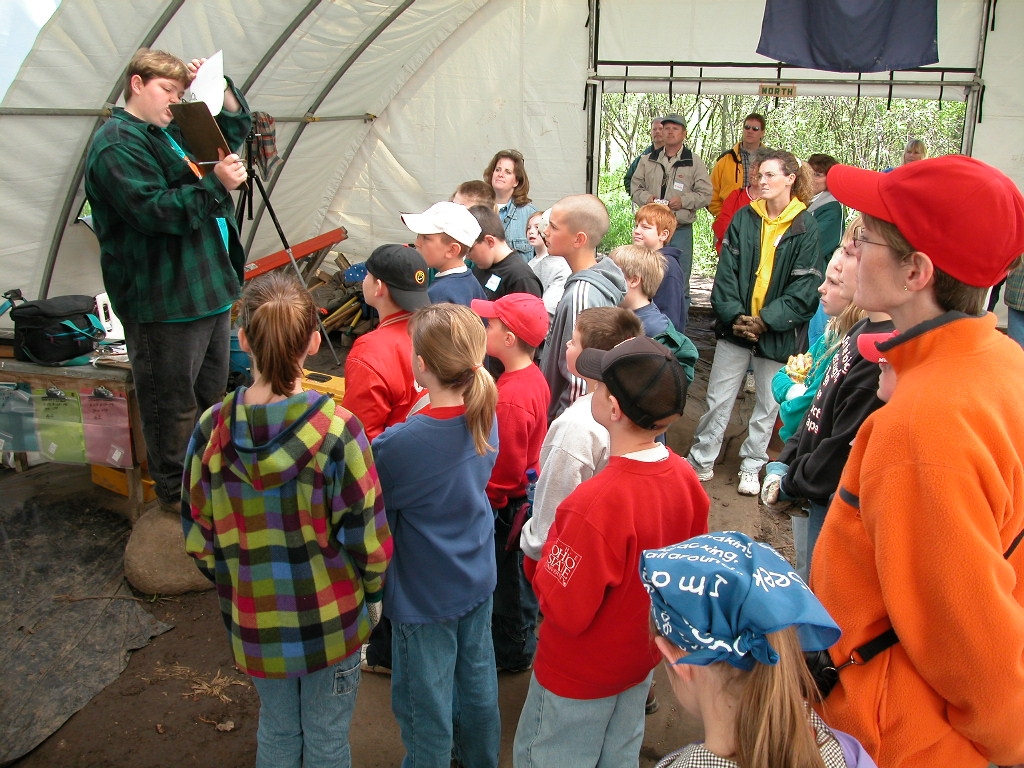
Johnson's Island Experiential
Learning Program
is based upon years of
experience in presenting archaeology to students. This
program is open to students in grades five through twelve.
The program runs from September through June, with the
months of December, January, and February off. The program
consists of two separate but integral components: the
Pre-field visit and the Site Excavation.
Introduction
 Heidelberg
Universityís Center
for Historic and Military Archaeology (CHMA) has developed
this experiential archaeological learning program available
to all Northwest Ohio area primary and secondary schools to
be conducted at the Johnsonís Island Civil War Military
Prison Site. This literature outlines the components of the
program as well as providing some background on the
Johnsonís Island Civil War Military Prison. All
investigations conducted through the CHMA are research
driven, and all materials excavated become part of the
archaeological record available for scholars to study. Heidelberg
Universityís Center
for Historic and Military Archaeology (CHMA) has developed
this experiential archaeological learning program available
to all Northwest Ohio area primary and secondary schools to
be conducted at the Johnsonís Island Civil War Military
Prison Site. This literature outlines the components of the
program as well as providing some background on the
Johnsonís Island Civil War Military Prison. All
investigations conducted through the CHMA are research
driven, and all materials excavated become part of the
archaeological record available for scholars to study.
Intent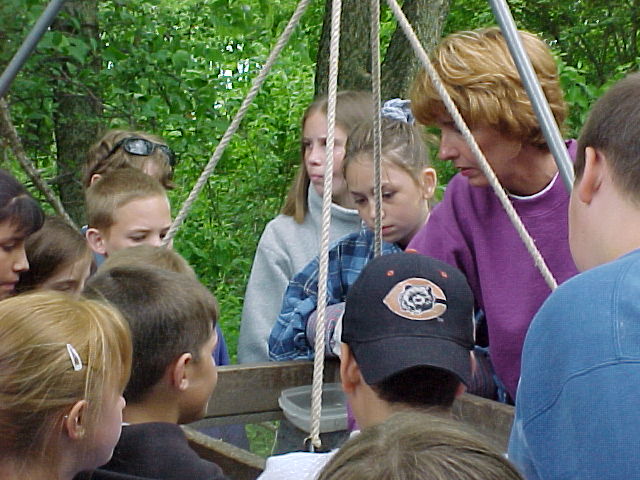 The
CHMA has created this program utilizing the Johnsonís Island Civil War Military Prison site as the focus of an archaeological experience involving primary and secondary
schools. Through this program, area schools will participate
in an actual archaeological study of the site of an American
Civil War prison used throughout the war for confinement of
Confederate Officers by the Union Army. Students will
receive a "hands on" learning experience of the type usually
only available at the college level. The program is unit
based, appealing to a variety of curriculum needs; for
example American history, Civil War history, archaeology,
scientific method, social science, and math. Students will
be participating in the excavations of portions of the
prison compound which fit into the greater research
questions being asked of the site by the CHMA. Students will
learn first hand how the POWs of the Civil War survived
their captivity. They will discover materials related to the
daily activities of the prisoners, hear from the prisoners
diaries, and finally learn how scientists search for
patterns in material culture to help explore human
existence.
Costs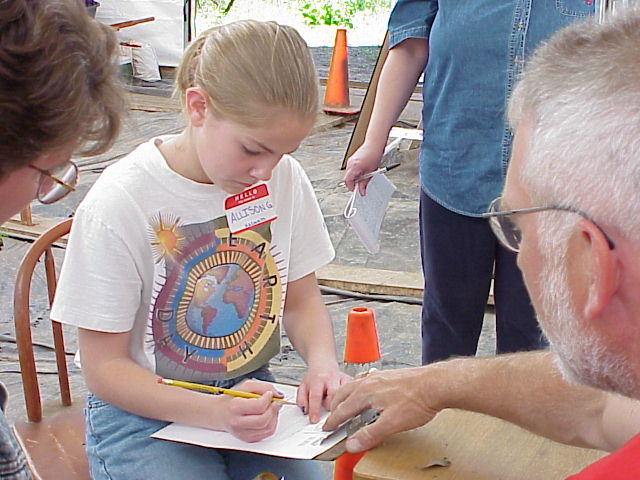
The fee for participation in
this archaeological experiential learning program is $375.00
per field day per group of students (Maximum of 24 students). This cost will include the Pre-field Visit and
Site Excavation. To ensure adequate instruction, safety and
enjoyment, groups will be limited to a maximum of 24
students for each excavation session. Significantly larger
groups can participate in other portions of the experience.
Scheduling
There are only so many
opportunities
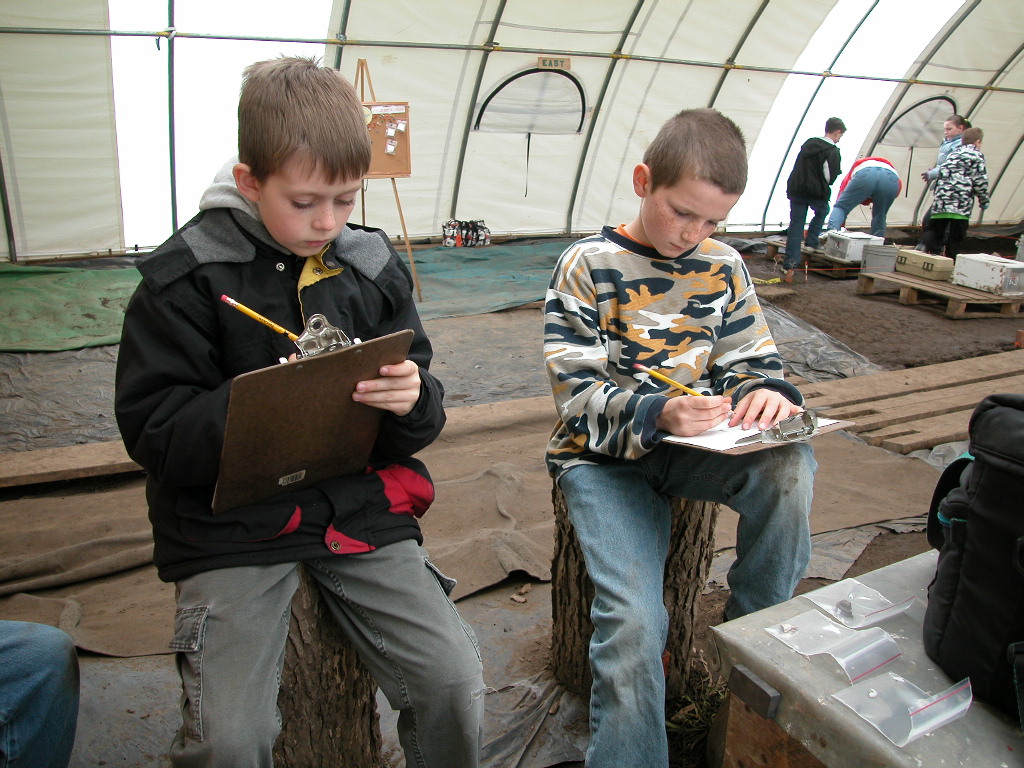 available for field experiences each season.
Therefore, priority will be given to schools that have
participated in previous years and on a first come, first
serve basis. The CHMA will make every attempt to accommodate
all interested schools. available for field experiences each season.
Therefore, priority will be given to schools that have
participated in previous years and on a first come, first
serve basis. The CHMA will make every attempt to accommodate
all interested schools.
For a schedule for the
Experiential Learning Program in Historic Preservation
sponsored by Heidelberg University,
click here.
Additionally, the summer Archaeological Field School is
noted as well as the Teacherís Workshop. If you are
interested in volunteering for the Experiential Learning
Program activities, please contact Dr. Bush for information
on the time the schools will arrive at the site. Your
participation is welcomed.
Pre-field Visit
The pre-field visit prepares
the student for the adventure they are about to undertake by
introducing them to the background of the site, explaining
the purpose for the excavation, and showing various types of
cultural materials (artifacts) which might be encountered.
The best way in which to facilitate this portion of the
program is to have all participating students assemble in
one, or possibly two large groups. (This depends upon how
many classes or students will be participating in the
program.) A school auditorium works well for this purpose. A
representative from CHMA, usually the site director-Dr.
Bush, addresses the assembled students with a slide
presentation. Commonly encountered artifacts, previously
excavated from the site are also on hand to be shared with
the students. A question and answer period follows.
The CHMA provides the
participating teachers with a manuscript that covers what
their students should learn prior to the site excavation
portion of the program. The manuscript provides background
information on the site, definitions of archaeological
terms, and basic archaeological methods (excavation
techniques, artifact interpretat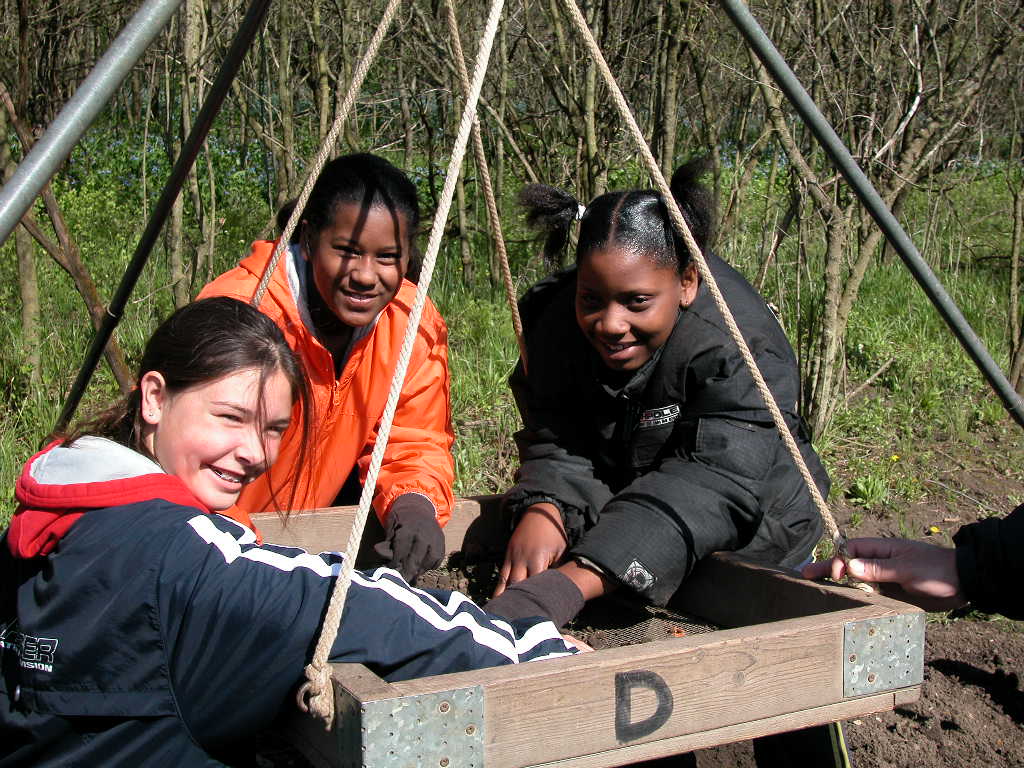 ion, and site etiquette
rules). Another part of the pre-field experience can include
having the students practice excavating using a prepared
"dig box." The dig box consists of a large box (2í X 2í)
filled with soil and samples of artifacts which the students
use to practice excavation skills and removal of artifacts.
Teachers are given instructions on preparation of the dig
box. ion, and site etiquette
rules). Another part of the pre-field experience can include
having the students practice excavating using a prepared
"dig box." The dig box consists of a large box (2í X 2í)
filled with soil and samples of artifacts which the students
use to practice excavation skills and removal of artifacts.
Teachers are given instructions on preparation of the dig
box. I have also
created a list of
historic archaeological vocabulary words in a
Microsoft Word Document that teachers may want to print out
and distribute to their classes in order to familiarize
their students with unfamiliar terms before their visit.
Site
Excavation
Experience has shown that a
maximum of 20-25 students can be accommodated at the site
during the site excavation. Transportation to and from the
site is the responsibility of the school system. Students
arrive on Johnso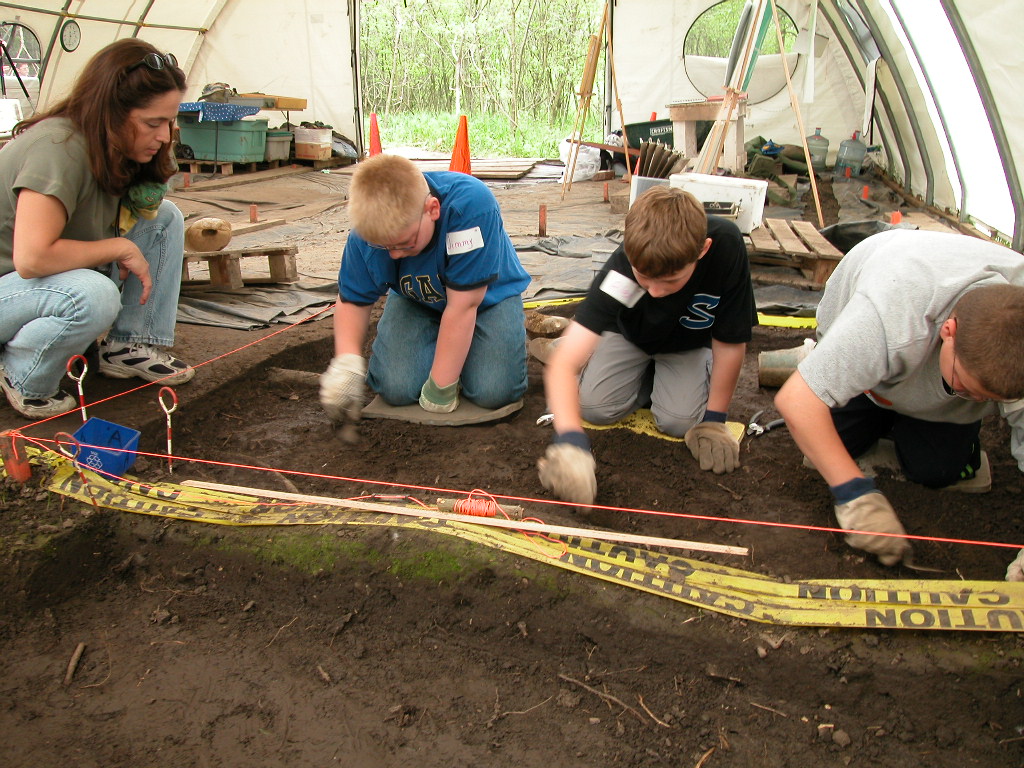 nís Island in the morning, stopping at the
cemetery first. The site supervisor will greet the bus and
escort the bus back to the drop-off point for the site.
Students will receive a short review of what is expected of
them as part of their visit. Site safety procedures will be
reviewed as well as site protocols. After the introductory
comments, students will be divided into small groups to
begin excavating. Typically, four to six students will be
assigned to each excavation unit. It is helpful if these
team assignments are made prior to the students arriving at
the site, giving consideration to creating teams where
students will be most cooperative in this learning
experience. nís Island in the morning, stopping at the
cemetery first. The site supervisor will greet the bus and
escort the bus back to the drop-off point for the site.
Students will receive a short review of what is expected of
them as part of their visit. Site safety procedures will be
reviewed as well as site protocols. After the introductory
comments, students will be divided into small groups to
begin excavating. Typically, four to six students will be
assigned to each excavation unit. It is helpful if these
team assignments are made prior to the students arriving at
the site, giving consideration to creating teams where
students will be most cooperative in this learning
experience.
Each team will be assigned
a particular excavation unit in which they will work for the
day. A minimum of one supervisor provided by the CHMA will
be assigned to monitor the activities of each group. It is
also advisable that the school provide one adult per
excavation team to assist the team supervisor. Interested
parents may be a good source for these assistants.
Supervisors provided by CHMA will include professional
archaeologists, undergraduate anthropology students, and
trained volunteers.
Students will excavate until lunch time (whatever the school
suggests) when the bus will transport them back to the
cemetery. During lunch, students will have the opportunity
to hear actual diary entries for the day of the excavation
from 1862 through 1865. Additionally, a sampling of prisoner
of war writings from Johnsonís Island will be read. After
lunch, students will resume their excavation of the site.
The excavation at the prison
compound will consist of exploration of the plow zone
associated with the structures that housed the prisoners.
Students will scrape the soil with trowels, collect the
excavated soil into buckets, screen the excavated soil, and
identify and bag all recovered cultural material. All
excavation equipment will be provided by the CHMA. A
supervisor will examine all screened soil prior to emptying
the screen. Students will excavate the unit (2 meter square)
through the plow zone until the subsoil is reached. Students
will not expose the final floor of units due to the skill
needed to insure that the interface with the subsoil is
properly identified. Students at the screen will collect all
cultural materials and place into the appropriate bag.
Certain finds are considered of special interested (termed
Field Specimens) and if found, the student gets their name
permanently associated with the artifact in the site
catalogue for all time.
Near the time the students
need to depart the site, students will complete their daily
field note forms and have them ready for collection at time
of departure. Unit supervisors will assist the students in
completing these forms. Finally, students will be brought
together as a large group to discuss their experiences. All
interesting findings for the day will be shared with the
group. The site excavation provides the students with the
rare opportunity of hands-on participation in an actual
archaeological dig. In addition to learning basic
archaeological techniques, the stude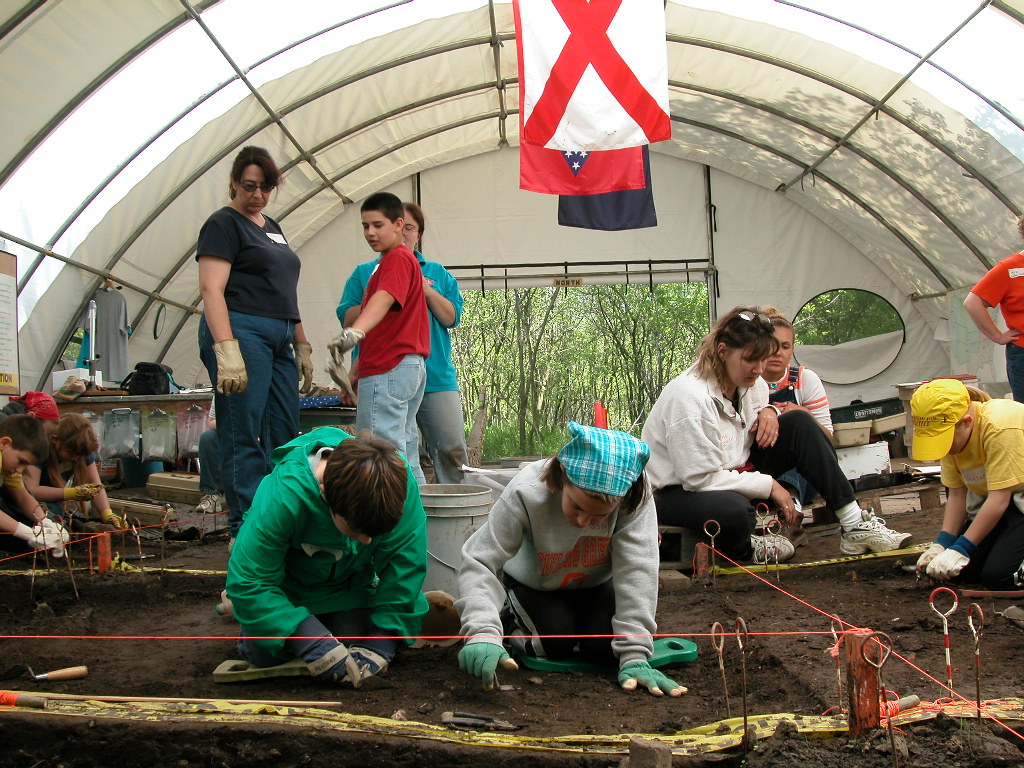 nts will experience
working cooperatively and communicating their findings both
orally and in writing. nts will experience
working cooperatively and communicating their findings both
orally and in writing.
Evaluation
All participating teachers
will receive an evaluation form at the time of the pre-field
visit. Completion and return of this form is greatly
appreciated so that the CHMA can continue to improve the
program. Student comments are also encouraged.
Working
Conditions
The CHMA will have the site
prepared for excavations prior to the students arrival. In
the advent of adverse weather, portions of the site will be
covered allowing excavation regardless of the weather. The
excavation of historic cultural materials includes the
recovery of glass sherds. Therefore, students will be
required to wear gloves during all excavation procedures.
Students will be required to have gloves and need to be
instructed to wear clothing appropriate for working in the
soil. Port-a-johns will be available on the island for
student use.
For
more information about Johnsonís Island:
Contact
David R. Bush, Ph.D.
Heidelberg University, Center for Historic and Military
Archaeology
310 E. Market Street
Tiffin, OH 44883
(419) 448-2327 (office)
(419) 448-2236 (facsimile)
dbush@mail.heidelberg.edu
Read
Rebels on Lake Erie by Charles E. Frohman
View
"Rebel Fire/Yankee Ice" (The Johnson's Island Story)
produced by T.R. Koba & Co.
Visit
Sutler Shop |